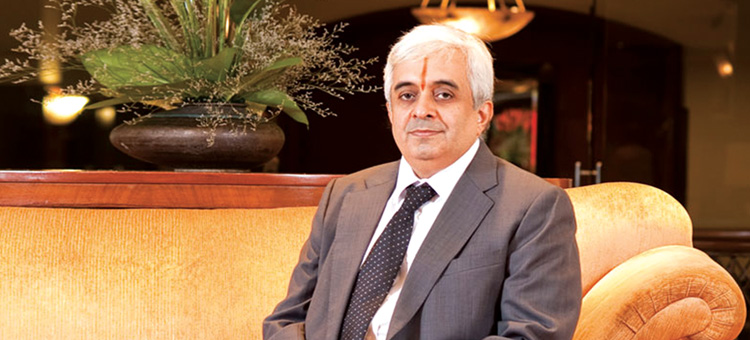Mumbai: Leading global hospitality consultancy Horwath HTL and the leader in benchmarking STR, jointly released their India Hotel Market Review 2018 recently. Below is an extract from the report. STR provided the data from 1100-plus participating properties while Horwath HTL worked in over 100 markets in India. Supporting the facts, Horwath HTL has contributed insights and analysed opportunities and challenges for owners, investors, developers and operators. It is 10 years since a downturn began with the global financial crisis.
The decade since, with several years of soft general business conditions, has seen chain affiliated inventory go from 44,000 to 1,42,000 rooms; it has also left a trail of stressed financials, debt defaults, asset sales and development failures. Supply has widened in range and geographic spread within the country by brands and operators as well.
At the all-India level, occupancy has been the highest in the last 10 years; ADR is the highest since 2012. RevPAR for Mumbai, Hyderabad, Pune and Jaipur is the highest; for Ahmedabad, Bengaluru and Delhi, it’s the highest since 2010, 2011 and 2012 respectively. On an average, 90,000 rooms are sold per day. Lemon Tree Hotels led the industry’s first IPO since 2009; a second was coming through as this report went to print. Among cities, Bengaluru now has the largest inventory crossing 14,000; as a metropolitan area, Delhi NCR has a significant lead due to its sheer geographic coverage. Chennai is on the threshold of being the fourth city with 10,000 rooms.
Markets, other than key ones, have increased supply share from 28 per cent in 2014 to 33 per cent in 2018. These are materially positioned at Upscale-Upper Mid and Midscale-Economy levels – a significant opportunity for brands positioned at these levels and with the ability to work smaller inventories (with F&B and banquet demand) particularly in tier II and lower markets. The leisure sector remains underserved with only 19 per cent inventory share.
“When you look at the annual numbers however, you wonder what is fuelling recent improvement in the ‘feel good’ factor – occupancy up by only 0.2 pts, 1.77 per cent ADR growth and 2 per cent RevPAR growth. No doubt positive, but barely so; in fact, Upscale-Upper Mid and Midscale-Economy segments dropped occupancy,” said Vijay Thacker, Managing Director, Horwath HTL India. The answer comes when you look at ‘same store’ numbers: 2018 performance for hotels that were included for reporting analysis in 2017. Occupancy is up +1.7 points at 67 per cent; ADR is close to Rs. 6,000 and RevPAR just shy of Rs. 4,000. Rate and occupancy positivity pervades all segments: Midscale-Economy ADR grew by 6.62 per cent.
Where is the balance on discounting? Standalone restaurants are already suffering. What is the goal of disruptive pricing? Disruption is good but should be responsible so that it is pursued to the extent it is a positive value-add, not for narrow short-term gains. Are we conscious as to when it becomes an ‘adder’ for the industry? There is now a push-back on OTA commissions; pricing-induced profitability concerns led to reduced driver earnings causing strikes at Uber and Ola. This may all sound market-unfriendly, but long-term fundamentals are equally vital.
F&B and banquets continue to carry significant revenue share, increasing even at lower-tier hotels. MICE and weddings will remain key business elements, although APC levels could harden in the near and medium term. The power of event-driven demand is now evident in more cities. Ahmedabad gains from specific conventions and conferences, Bhubaneshwar gained from hockey and Kolkata from football. Can the positive experience of inbound travel for Dassera festivities in Mysore (or annual festivals that create major travel into Paro and Thimphu in Bhutan) be used as a model to attract foreign leisure for Diwali? Could that be a way to shore up business in a period which hurts hard?
Insolvency and Bankruptcy Code (IBC) is enabling resolution of default assets, either through the process of that code or through negotiated transactions in advance of IBC provisions being invoked. Well-funded family offices and institutional investors could acquire assets at attractive discounts. Operator changes may be less likely, unless the acquirer is a chain as with the erstwhile Park Hyatt in Goa; the temptation to change operators must be very assessed for its genuine necessity.
Positive amendments to CRZ rules will increase the ability to develop beach resorts closer to the coastline; additional FAR may also be available. The approval process for projects impacted by CRZ rules has been eased. That will help beach locations and upcoming island developments.
One hopes that the hotel and tourism industry will avail these positive changes with a sense of responsibility and full regard to long term sustainability. The GST Council has set Rs. 7500 as the level of demerit. Is it that a guest contributing additional amounts to GDP must be penalised? The Council has considered the impact of the GST collections. But what about economic growth of a sector that can contribute jobs and foreign exchange? Is it not putting hurdles in the path of profitability?
Loyalty programmes have become a key element for development. Their value as business drivers is significant; an assessment of their true costs somewhat opaque. It is good to see domestic chains launch them, although some consolidation – of programmes, and not ownership – could create greater real value.





